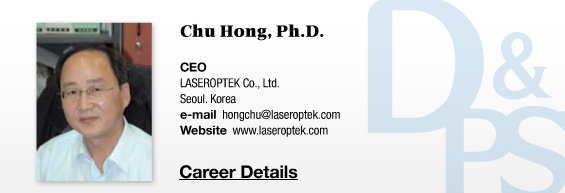▶ Previous Artlcle : #10-2. Long Pulse Laser
In the following three articles of this series, I would like to go over operation principles and methods of commonly used lasers, one of the topics most commonly enquired about by our readers. Operation principles of a laser does not differ greatly across various laser types, however, the method may differ widely.
HELIOSⅡ/LOTUSⅡ/HYPERION – Manufacturer: LASEROPTEK(www.laseroptek.com)
The ‘method’ in this regard refers to the method of generating laser. Here is an example that may help understanding. Think of a hydroelectric power plant. In efficient generation of electricity, the height of the waterfall and the gravitational force of the falling water determine the electric power. A higher dam and greater current of water would produce larger electric power. In other words, the height of the dam and the amount of water released from it per time unit determine the electrical output of the power plant. An industrial or medical laser does not veer far away from this concept of hydroelectricity generation. Just as the sluice gate controls the power output in a hydroelectric power plant, laser can be categorized as bellow three types depending on the duration of “gate opening.”
1) Short pulsed laser (Q-switching, mode locking, etc.).
2) Free running laser.
3) Long pulsed laser.
In this article, I would like to discuss about the short pulsed laser used in pigmented lesion treatment.
The Q-switching technique produces laser in a very short time, less than one millionth (10⁻⁶) of a second. This can be compared to opening the sluice gate for just the same duration to maximize the force of the water current, which would be significantly greater than in opening the gate gradually. This makes the impact extremely powerful (energy/second=peak power). The Q-switching technique carries out this physical phenomenon with laser. Irradiation of laser beams produced in this way selectively destroys target pigment lesions while minimizing thermal damage to the treated area (this is because the laser irradiation time is shorter than the thermal relaxation time of the target lesion). This technique was first proposed by an American physicist Gordon Gould in 1958. The ruby laser was first developed by Theodore Maiman in 1960. Two years later, (1961/1962) R. W. Hellwarth and F. J. McClung of the USA completed this technique using a ruby laser.
There are two main types of Q-switching:
1) Passive Q-switching.
2) Active Q-switching.
For laser oscillation to occur, the resonator loss should be equal to or less than the gain. In the Q-switching technique, the resonator loss is rapidly reduced which creates similar conditions as the extremely quick opening of the sluice gate to allow unhindered flow of water. The passive Q-switching technique controls the opening duration of the sluice gate using a saturable absorber as in Cr:YAG. The active Q-switching technique uses electo-optic devices such as Pockels cell and Kerr cell or, an acousto-optic device to control the opening time of the gate. In general, a CW (continuous wave) laser uses acouto-optic devices. Currently, YAG lasers using electo-optic devices are the most popular. Table 10-1 shows characteristics of YAG and Glass lasers.

Table 10-1. YAG and Glass lasers.
-To be continued-
▶ Next Artlcle : #11-2. Operation principles and method of different lasers





















